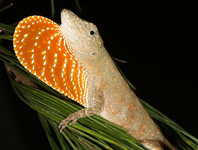Abstract
The southern African endemic genus, Pachyphymus Uvarov, 1922 (Orthoptera: Acrididae: Euryphyminae), is the only genus in the Euryphyminae subfamily with enlarged and hump-shaped pronotal crests. Here, we redescribe two species using newly evaluated diagnostic characters: P. carinatus Dirsh, 1956 and P. cristulifer (Serville, 1838); and describe two new species: P. samwaysi n. sp. and P. namaquensis n. sp. Of the 23 genera of Euryphyminae, Pachyphymus is arguably the most morphologically distinct. However, the species of Pachyphymus, like those of the other Euryphyminae, are difficult to distinguish morphologically because of a high degree of intraspecific variation. Height and shape of the pronotal crests and rugosity of the pronotum were previously considered diagnostic but are strongly variable within species. Degree of infumation of the hind wing is strongly conserved and is the single best diagnostic character in most cases. However, one population of P. cristulifer, which is isolated from the mainland population by a mountain range, shows very little conservation in this character. Additionally, one population of P. namaquensis and one population of P. cristulifer, both from outlying regions of their geographic range have intermediate wing infumation as well as other morphological characters. This may indicate recent or ongoing hybridization or divergence of the geographically overlapping species. This study emphasizes the need for molecular analysis to complement detailed morphological diagnosis of the species of Euryphyminae, a notoriously under-studied and taxonomically problematic group.

